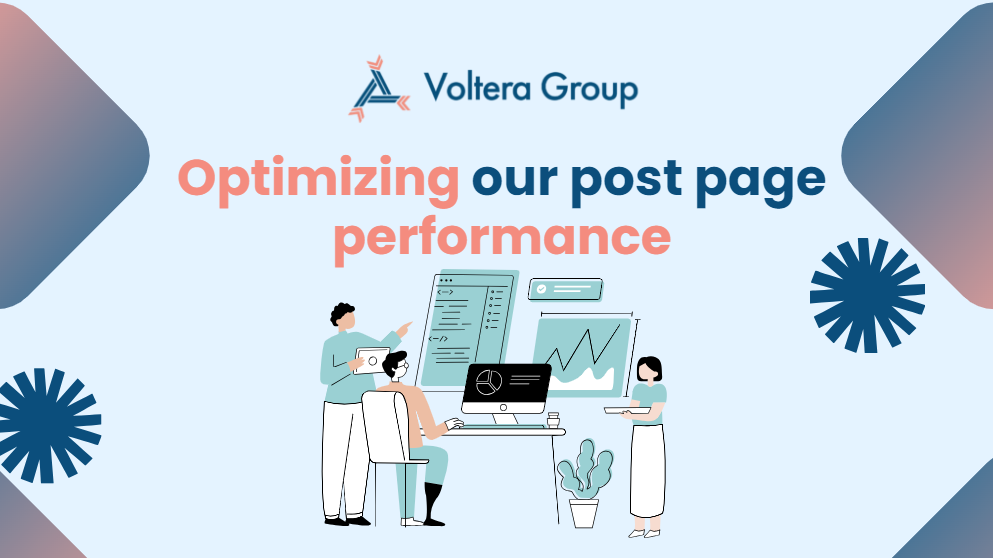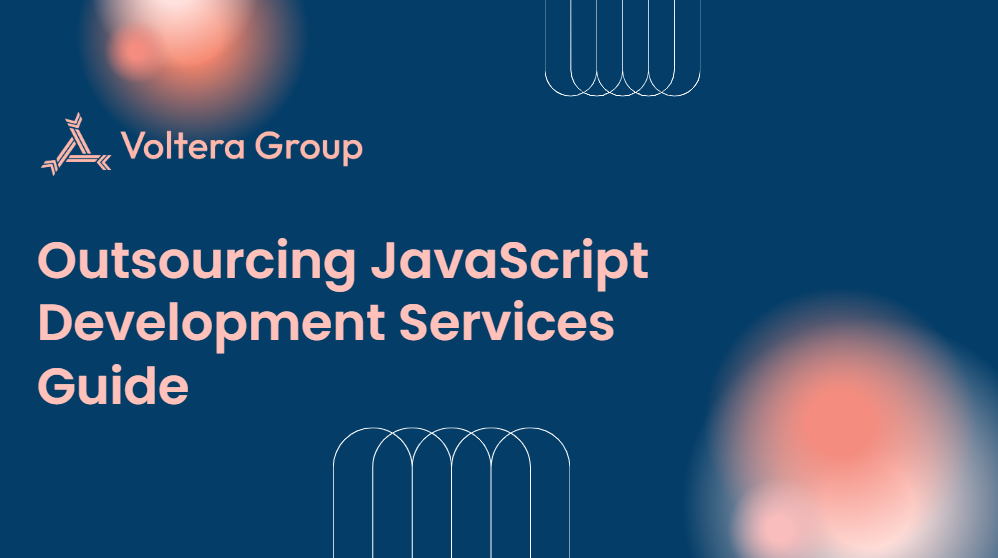In the world of web development, performance is paramount, especially for blog and post pages laden with content. Slow-loading pages lead to poor user experiences, lower search engine rankings, and, ultimately, decreased user engagement.
At Voltera Group, we understand the significance of website performance and have recently embarked on a journey to optimize our post pages for faster load times, enhanced user experiences, and improved Core Web Vitals scores. Here’s how we did it and the lessons we learned along the way.

Image Optimization: Compressing and Lazy Loading
Images are often the biggest contributors to page weight, and optimizing them was one of our top priorities. We took a multi-step approach to make sure images were loading efficiently:
Image Compression: We used modern image formats like WebP and compressed our images without compromising quality. This helped reduce the overall size of the images by up to 50%, significantly improving page load times.
Lazy Loading: We implemented lazy loading for all images on the post pages. This means that images only load when the user scrolls down to them, reducing the initial load time and improving the perceived performance of the page.
By adopting these image optimization techniques, we not only reduced the page weight but also improved our Largest Contentful Paint (LCP) score, one of the key metrics in Google’s Core Web Vitals.
Code Splitting and Minification
Another key area we focused on was optimizing our JavaScript and CSS. Large, unoptimized files can slow down page loading, so we employed two effective techniques:
Code Splitting: Instead of loading all JavaScript needed for every post upfront, we utilized code splitting to break our JS files into smaller, manageable chunks. This method allows only the necessary code to load when a user navigates to a specific part of the page, drastically reducing the initial payload and speeding up our post page loads.
Minification and Tree Shaking: We minified our JavaScript and CSS, removing unnecessary characters, comments, and unused code. Tree shaking helped eliminate dead code, ensuring that only essential parts of our code were sent to the browser.
These optimizations not only streamlined our pages but also improved our First Input Delay (FID), allowing users to interact with content more quickly.

Caching and Content Delivery Networks (CDNs)
Caching and CDNs played crucial roles in enhancing our page speed, especially for returning visitors and users across different regions:
Browser Caching: We implemented browser caching to store certain assets—like images, CSS, and JavaScript files—in users’ browsers. This means repeat visitors don’t need to download the same resources again, which significantly cuts down load times.
CDN Integration: We integrated a Content Delivery Network (CDN) to serve our static assets from data centers closer to our users. By reducing the geographical distance between the server and the user, our post pages now load faster for users around the globe.
Optimizing Fonts and Third-Party Scripts
Fonts and third-party scripts can also negatively impact page performance. Our approach included two primary strategies:
Font Optimization: We minimized the number of web fonts we used and ensured they were preloaded to avoid rendering delays. Additionally, we implemented font-display: swap, allowing text to display with fallback fonts while custom fonts load in the background.
Third-Party Scripts: We audited all third-party scripts, removing unnecessary ones. For those we retained, we employed asynchronous loading to ensure they did not block the rendering of the main content.
Voltera Group’s Commitment to Performance
At Voltera Group, our journey to optimize web performance goes beyond just our post pages. We are committed to continually refining our processes and sharing best practices to help our clients enhance their online presence. By prioritizing performance optimization, we aim to deliver faster, more efficient web solutions that drive engagement and satisfaction.





